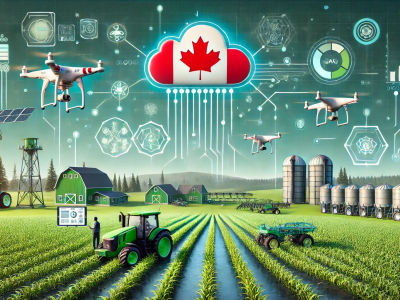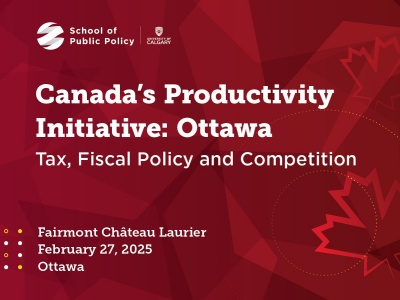A review of global GMO regulation amid the gene edited crop boom
A new research article discusses the development in recent years of global regulations around gene editing and genetically modified organisms or “GMOs”. There has been a considerable shift in the landscape of agricultural biotechnology products, and this paper delves into how gene edited crops fit into existing regulatory frameworks, and how various countries are evolving their stance on this new subject.
The authors explore how biotechnology has come more into use in the food sector, giving legislators the challenging task of assessing and managing the associated benefits and risks with this technology. This review is the first of its kind in trying to synthesize the applicable regulatory documents across the globe, providing links to original GM legislation and related research.
In the last 25 years, genetically modified (GM) crop production has globally experienced an increase of over 100-fold, with farmers in 26 countries currently cultivating about 190 million hectares of biotech crops, representing 13% of total global cultivated lands. These crops are mainly split between 50% soybean, 30% corn, 13% cotton and 5% canola. Most of the four major crops named are not traditionally used for human consumption: soybean crops result in soybean oil, used in vegetable oil products, industrial adhesives, solvents and lubricants, while bean meal is a high protein part of animal feed. GM cotton currently makes up 79% of total world cotton cultivation. GM corn has shifted from mainly animal feed to ethanol production in the last twenty years, in the United States in particular.
The authors point out that the first challenge of GMO regulations is agreement on the definition of a GM crop. Developed in the early 2000’s, the United Nations (UN) Cartagena Protocol on Biosafety of a “living modified organism” (LMO) defines it as follows: a plant is genetically modified if it meets two requirements: i) the plant contains a novel combination of genetic material, and 2) which was introduced by using modern biotechnology. “Modern biotechnology” is defined as an application of either in vitro nucleic acid techniques (DNA manipulation techniques in the lab) or the fusion of cells beyond the original biological classification (mixing taxonomic families).
The phrase “modern biotechnology” separates certain techniques from those considered more traditional, such as plant breeding, selection and conventional mutagenesis techniques.
The authors note that new breeding technologies such as gene editing continue to enter the industry, adding more complexity to this regulatory area. Scientists have argued some methods of gene editing are not “genetic modification” because the method of introducing changes to the DNA is no different from changes that can occur during conventional breeding or in nature. Although the resulting varieties created by either random mutation breeding or gene editing technology (for example “CRISPR” technology – a recently developed technique for cutting and revising DNA strands) may be indistinguishable in makeup, in most countries, they will be subjected to completely different legislation.
Government legislators strive to enact regulations that protect their citizens, society and the environment. GM regulations are categorized as either process- or product-oriented. Process-oriented regulations regard GM technologies as a novel technique compared to conventional production methods, thus triggering specific legislation to be applied. It puts emphasis on the process used to produce the novel product. Product-oriented regulations emphasize the novel characteristics of the product itself, in comparison to those produced by conventional breeding. To date, Canada is the only country which has based their entire GM legislation on the product rather than the process.
In the last twenty years, huge adoption of GM crops across a diversity of crops has been seen globally. GM offers innovative agricultural tools to combat a range of challenges seen by farmers. Specific countries have considered the risk management versus benefits related the GM crops from a number of different perspectives, resulting in a wide diversity of regulatory approaches to legislation. Certain frameworks on cultivation do not include trade regulation of GMO products, which is then regulated in a separate document or governing body. Several countries have distinct rules regarding cultivation of GM crops which only allow the production of GM seeds for export, but prohibit domestic use. Some of these countries allow the import of GM crop products for food and feed, while prohibiting domestic cultivation.
Neither product- nor process-based legislation seems to favor the commercialization of GM crops. The trend indicates that countries leading in GM cultivation are the same countries that are quickly adapting their biosafety law to accommodate gene-edited products, and therefore supporting the domestic agriculture sector.
Some countries appear to be clearly targeting the socioeconomic benefits of GM crops. For example, China is the second largest cotton producer in the world, and 95% of its cotton crop is GM. In addition, from 2014 to 2017, China accounted for 42% of the world’s CRISPR-related publications in agriculture. This represents more than double that of the United States. However, China does not yet have a regulatory framework in place to assess gene-edited crops for commercial release.
Other countries such as New Zealand and Norway do not cultivate GM crops at this time, and both countries have unique approaches to assessing benefits and risks of GM crops. In addition to considering economic and environmental concerns, New Zealand’s Hazardous Substances and New Organisms Act requires the governing bodies to consider the impact that the novel plant might have on the Maori culture and traditions, especially regarding valued fauna and flora, ancestral lands, water and sacred places and things. Norwegian law adds similar criteria – societal benefit, considering sustainable and ethically sound products.
The authors note a number of countries that are currently studying their current GMO regulatory environment, and potentially relaxing, modifying, or loosening definitions as their cost/benefits assessment takes into account new data now available. The Council of the EU has requested a study and proposal on the status of “new genomic techniques,” due by April 2021. The Norwegian Biotechnology Advisory Board recently proposed to the government some relaxation of legislation concerning deliberate release of GMOs. Switzerland is currently studying a potential co-existence of GM crops with conventional agriculture within their regulations. In the United States, the FDA manages the assessment of safety of GMO plant products, and several GM products have entered to food market including some CRISPR-modified crops. A number of Latin American and South American countries are examining methods of harmonization of GM regulations. The Indian government has currently proposed new GM regulations, including a tiered approach, with an increasing number of assessments for increasing number of changes to the DNA.
The authors of this paper note Canada is in the top five largest biotech crop cultivators, with about 7% of the total global biotech crop area in 2018. Canada follows the product-oriented approach in legislation, which looks at novel traits, not the way they are introduced. The novel plant product is subject to the same risk assessment regulation from the Canadian Food Inspection Agency (CFIA) no matter what the source of the novel traits. The regulations are triggered when a specific trait expresses at least 20-30% higher or lower than the conventional varieties.
Countries such as Argentina, Canada and Australia, which have already legislated and implemented their approach to new breeding techniques, are updating and implementing their existing science- and risk-based approaches to assess the products of gene editing technology, resulting in flexibility on a case-by-case basis with discretion, and giving room for new scientific evidence on new breeding techniques.
The authors point out that after 25 years of field trials, cultivating and trading GM crops, the accumulating bodies of evidence can now further develop and guide the law. In countries with less experienced regulatory processes, policy makers are being informed and educated by experts in the form of technical advisory bodies and global and regional consultations.
Article:
For further reading, the full article is located in the reference below.
Reference:
Crystal Turnbull, Morten Lillemo and Trine A.K. Hvoslef-Eide, “Global Regulation of Genetically Modified Crops Amid the Gene Edited Crop Boom,” Frontiers in Plant Science, 2021; 12: 630396. https://www.ncbi.nlm.nih.gov/pmc/articles/PMC7943453/
Learn more about The Simpson Centre here


